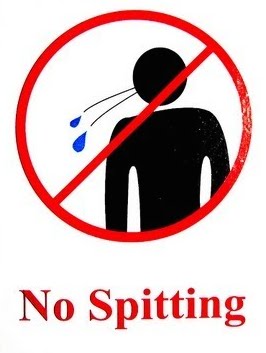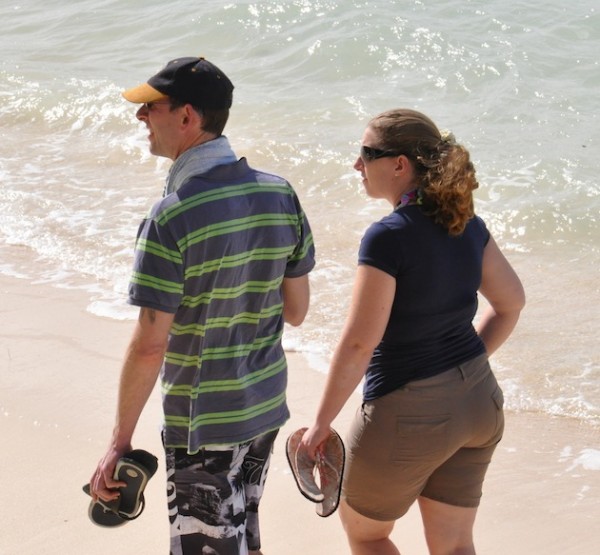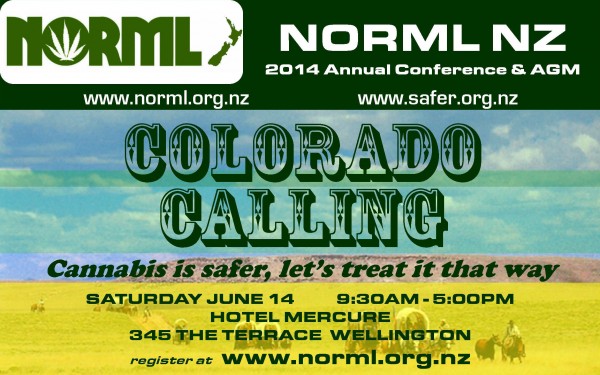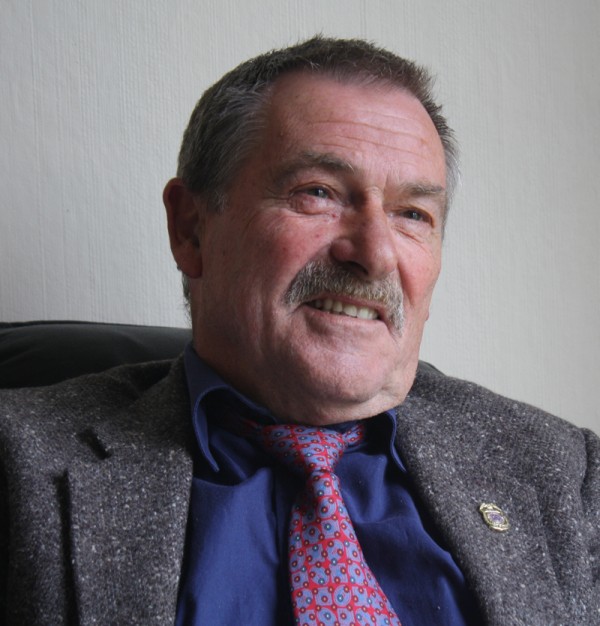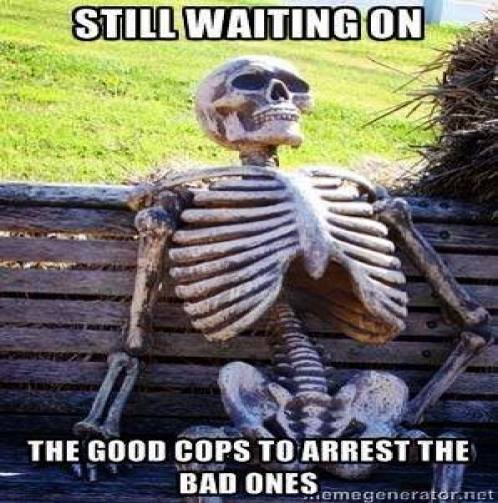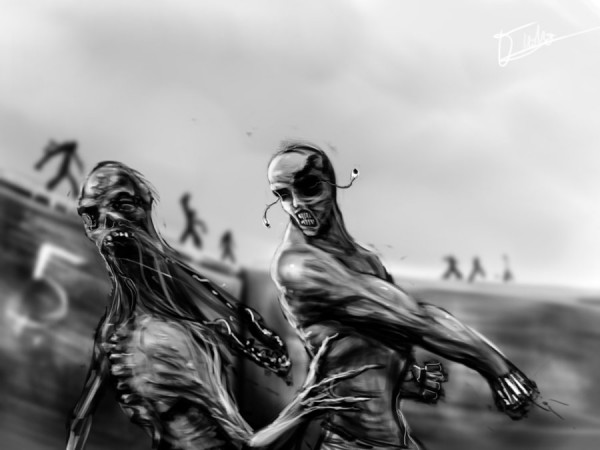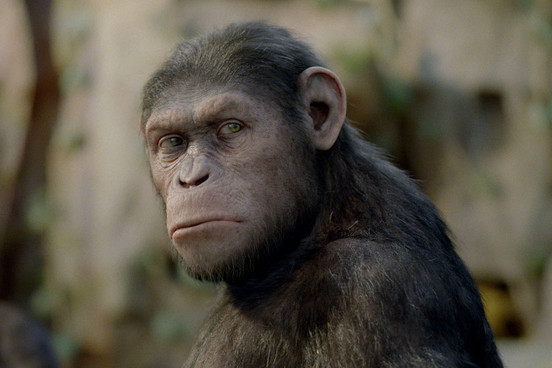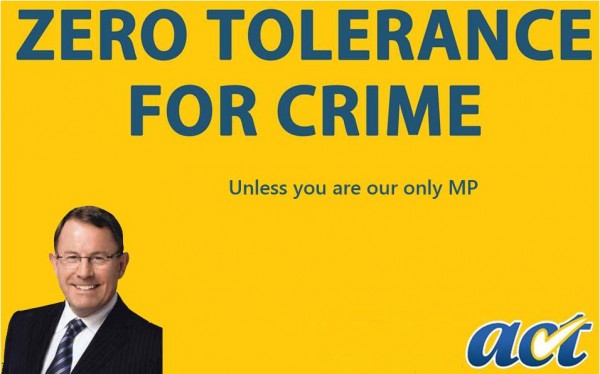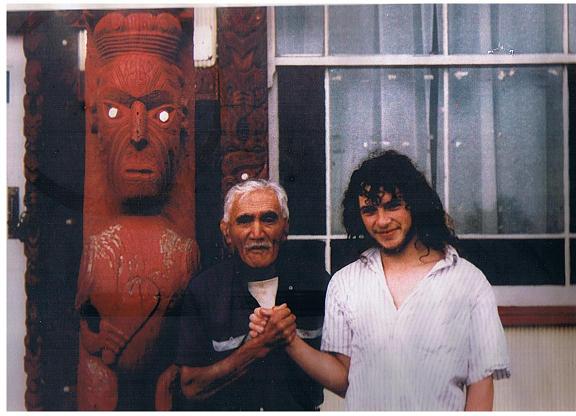
Me and My Maori Grandfather Autiti Wikiriwhi back in the late 80s
Below is the full script of a speech I wrote for the One law for All party AGM which was held tonite in Hamilton.
As usual I was still typing it out a few hours before I was due to speak.
That was when I realised I had got way too carried away for the 10-12 minutes I had been allocated, and so I had to substantially Edit it down, Yet I have decided to post the full script rather than relegate all the extra stuff to the dustbin.
I have inserted ***** at the beginning and end of the two sections which I did not deliver at the meeting.
Because I had little time to work on this, it is not as good as I would have liked it to be.
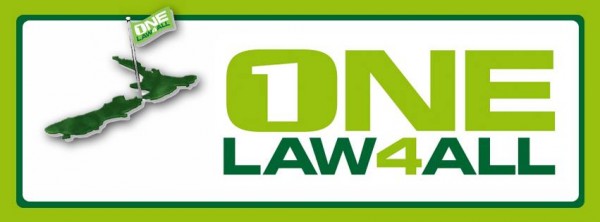
Good evening Ladies and gentlemen,
As you already know, my name is Tim Wikiriwhi, and it is an honor to be invited to address your Party AGM.
I struggled to write my speech for you tonight, not only because I am doing long hours at work, but also because you are not my usual audience whom are most often unfamiliar with the common arguments against Waitangi separatism.
Over the past week, I have been stressing out, and only really started framing this speech last night, … thus I have had little time to polish it,or memorise any portions of it, and so I apologies in advance.
It’s a bit different.
My focus tonight is on moral truths and implications rather than historical facts and figures.
I focus largely on the here and now.
It is a personal perspective.
The last thing I wanted to do is to rabbit on about things that you are probably already well aware of.
I want to talk about some of my personal experiences, though tonight is not about me, not about promoting myself.
I simply wish to edify you with some of my personal insights.
I hope you will enjoy it.
I seek to encourage, and emboldened you all to act with fervor in achieving the noble cause of establishing Racial equality before the Law.
I hope to have added a few Arrows to your Quiver for the battle which lies ahead.
And I also hope to have laid out a few Challenging thoughts for you to Mull over.
Establishing One Law 4 all is a political Ideal I believe in very deeply,
and is a principle of justice which I am very passionate about.
While I am a fitting and turning engineer by trade, and work as a self employed Contract engineer, I am also both a Libertarian, and a Christian,
having studied history, philosophy, law and politics in my spare time.
And as a consequence of my private studies, I have been actively opposing treaty separatism for nearly 15 years.
I get my Maori ancestry from my Father, who is of both of Arawa and Ngapuhi decent.
Unfortunately he was very much like ‘Jake the Muss’, a violent alcoholic, whom abused my mother until she finally left him when I was about 4 years old.
My mother, my younger brother and sister, and I went and lived with our Pakeha Grandparents…. Which in it’s self was Providential in forming the person whom stands before you now, as these wonderful human beings came to have such a massive influence in my life.
I have not seen my Father since 1971.
He never bothered to fulfill any of his Duties, yet because this ugly business happened such a long time ago, I don’t hold any real animosity towards him.
He’s a stranger to me, yet I will make the point that there is no way that he can blame his Violence and alcoholism, and lack of contact with his children on Pakeha oppression!
I say that as an adult, he was fully responsible for his own behavior, which clearly demonstrated he possessed very skewed values, and a serious lack of personal ethics.
Maybe life was not easy for him… maybe my mother wasn’t perfect either, yet there is still no excuse for how he behaved.
Allan Duffs ‘Once were warriors’ truly is an Epic, which strikes a chord amongst many Maori people, who can relate to the truth of it.
There is indeed problems with booze and violence among a great many Maori people … yet if you really look at the message of Allan Duff… You see that he doesn’t blame this moral sickness on the Pakeha…. But on Maori men’s own lack of personal ethics and self-responsibility… and a sorry culture of violence which exists among Maori themselves.
I would like to suggest to you however that this lack of self responsibility to some degree may be also understood as an un-foreseen consequence of Nanny State social welfareism… which is a significant factor among Maori, as welfarism is not conducive to strengthening values about self-reliance and self-responsibility, but instead fosters a mindset of dependence and victimism,…. Blaming ‘others’…. Blaming ‘circumstances’ for not being able to support themselves, and for wallowing in drunken stupor.
I find it hard to see how More socialism… more dependence upon special government programs is supposed to cure this… though this is precisely what the Socialists prescribe.
If anything I say it must result in greater addiction, and heavier reliance on Government… not Self-empowerment in the true sense… not Liberty, and Self responsibility.
It breeds a political class that exists purely by political means.
And we see this happening not only via welfare dependence, but also with the vastly expanding Race based institutions of Government which are multiply under the Doctrines of ‘Treaty partnership’
This Social engineering has manufactured a massive vested interest in maintaining the doctrines of treaty separatism… and is frightening to contemplate.
The longer this process continues, the harder and more painful is the road back to true liberty and self reliance… out of government dependence and the re-establishment of equality before the law.
And the harder we can expect this growing vested interest to fight to maintain it’s political advantages.
Now while I pour scorn on the claims of ‘treaty injustice’ as being a legitimate excuse for Maori living at bottom of the social heap, I would never suggest that we live in a perfect society!
There is of course plenty of injustice…. Plenty of Evils in our society which need to be addressed, yet we must take care to correctly Identify them.
I would also suggest that most of the required remedial work rightly involves removing Bad rules and regulations, not adding more!
We need More Freedom, more self reliance, More voluntary community action… and less government.
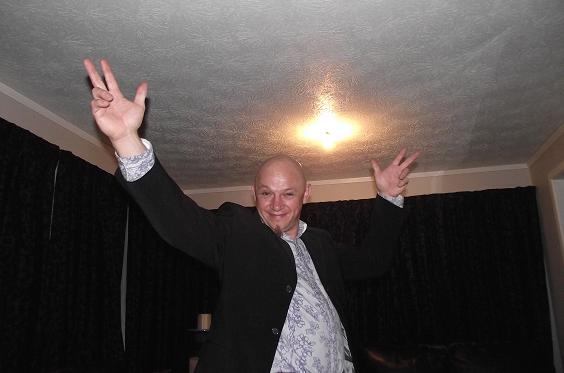
With regards to Maori social statistics, I say New Zealanders have allowed themselves to be deceived via a mis-diagnosis of what really lies at the root of Maori poverty, crime and ill health.
Bad Medicine authored by the racist radical movement and their socialist allies … whom have a specific racist agenda to accrue Wealth and power.
When you think about it, It’s way too convenient to blame Maori Alcoholism and violence, etc on Pakeha for bringing booze with them on their ships, and blaming Maori lack of self-control as some sort of pitiful response to a greedy Pakeha scheme to suppress their culture, and dis-possess them of their lands.
Yet this is exactly what People like John Minto, and Tariana Turia have done.
It has been way too easy for such Ideas to be propagated by Political agitators who are taking full advantage of fatal faults within our democratic engines of State to their own devious advantage.
I am referring to our Apartheid electoral system and Race based seats in parliament , which allow Radical parliamentary hopefuls to vomit forth their lies and racism to bamboozle their captive section of society without having face the Democratic backlash of those outside their parishes…. whom they are maligning night and day.
It is imperative that these Racist seats which corrupt our democracy are abolished.
*************
The Separatist doctrines have been imbibed by the Mainstream political parties, and now are Official doctrine.
Socialists of both the left and the right expect New Zealanders to believe that Maori are not really responsible for their own actions…. Not responsible for their own poverty, but are the victims of a massive Race based political crime… which requires Political interventions to help them get back their feet.
I would like to point out to you that in reality
these doctrines have nothing to do with the Treaty of Waitangi.
This is pure Marxist anti-Western Imperialism in action.
The Treaty is merely a convenient tool by which to frame the Grievance industry.
Marx may be dead. The Soviet Union may have collapsed.
yet the Evil doctrines the invented to destroy western Capitalist civilization are alive and well and very popular in the Beehive.
What we a witnessing with regards to Treaty separatism is in fact a microcosm of Socialist democracy which is also going on in the Macro-scale Globally.
This whole treaty industry is typical Socialist Dogma.
It is a philosophy which relies upon dividing up society into various groups and treating them differently!
Creating special prohibitions against one section, and giving political favor and advantage to another!
Socialism functions by denying the principle of equality before the Law.
Socialists are forever making Laws which discriminate on the basis of Race, Sex, Age, Religion, etc etc, always growing the power and expense of running the government…. Forever increasing the burden upon the Tax-slaves backs.
It ought to be obvious that there is far more involved in achieving these goals that merely establishing Racial equality before the Law.
We need to thoroughly dismantle Nanny State.

*************^^^^
Of Course Alcoholism and violence is not monopolized by Maori alone!
These problems are Global, and there are plenty of Pakeha who also behave in these irresponsible and criminal ways.
They certainly are not ‘the victims of ‘British imperialism and greed’, thus exposing the lie that Maori Criminals and alcoholics are somehow a specially oppressed minority.
The fact is that it my Fathers problems…. Like those of all violent Drunks of every colour is fundamentally a serious lack of Personal ethics!…. and not anything at all to do with all the so-called ‘Violations of the treaty Rubbish’.
While Countless Millions have been siphoned out of the pockets of Taxpayers and hand over to enrich an aristocracy of Fat cats and Racist liars… the social statistics for Maori continue to wallow…. Esp in the area of Crime and imprisonment
Most of the ‘benchmarks’ listed as indicators by social scientists are in reality matters of personal Ethics and responsibility… and not the proper business of politicians and government interventions.
On the other hand Bad over-bearing Political interventions do reek havoc upon the populations they are imposed upon… and so it is little wonder that so many Maori are in Jail for violent crimes against tourists, Pakeha, and other Non Maori peoples…. When they have been fed the propaganda that they should envision themselves as Warriors, who are also victims of a Foreign invasion.
This is how the Political lies of Treaty separatism has generated a very Real Race hatred which is growing within the Radicalized Maori community…. And it is a Cancer upon their souls.
The Social unrest Treaty separatism is very real, and the only hope of remedy is by overthrowing the lies, and the Evil politics which generates this Race hatred, and replacing it with more enlightened and self-empowering values and ideals.
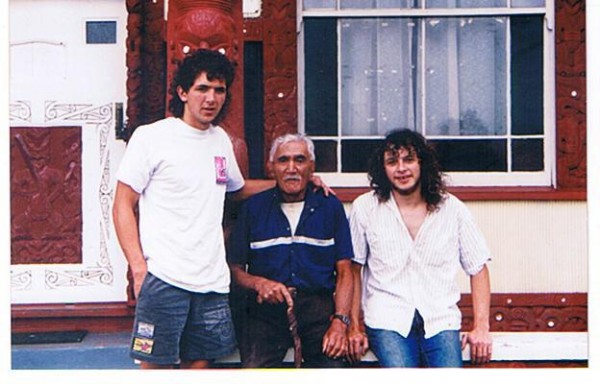
*******************************
Of course I didn’t learn about the gigantic political scam that I call Waitangi apartheid through State education!
The socialists have used their virtual monopoly in Education to indoctrinate our youth with their racist propaganda.
They have been systematically brainwashing the youth of New Zealand… propagating a falsified History, and a diabolical race based political ideology for 40 years.
Thus today while older generations have witnessed this scandal taking place before their eyes, and can remember a time when New Zealanders were proud of their colonial heritage,
Sadly the Younger generations to a large extent, have been sold a completely distorted view.
They have been taught that Europeans Invaded New Zealand and Raped and pillaged the country out of sheer Greed.
The Real history of the Colonization of New Zealand is something very different.
One of the reasons that I am able to see what has happened is because I am Self-educated.
My Dear Deceased Pakeha Maternal Grandfather and my still living Grandmother were both teachers by trade, and they instilled in me a love of Books, and a love of learning.
I remember at 4th form Kelson Boys high school in the 1980’s, being forced to choose between Maori studies, and engineering… you could not do both, and my Maori Class teacher was keen for me to study Maori…. Both because I enjoyed the subject, and because of my blood, yet I chose to study engineering instead because I already had an Engineering apprentiship lined up…. I only needed to complete School certificate before I started.
When I think about that choice, I consider it a very near thing indeed!
Would I be standing here today had I decided to study ‘Maori’ instead of Engineering?
Or would I be speaking at The Internet Mana party AGM instead?
Ha ha ! 🙂
Chilling thought!
Such is the danger of giving Politicians such a powerful tool of social engineering (State schooling), and compulsory control over our children’s minds!
Via the education system, it has thoroughly contaminated the Media which instead of being a Vanguard for freedom, and a watchdog against Corrupt government activities, The so-called ‘Free press’ act as if they are on the Government pay roll.
It is because of the sheer scale with which the lies that underpin treaty separatism have been foistered upon the population, including that absolute repudiation of the principle of Equality before the law… the Socialist doctrine of ‘Indigenous rights’ which is an ‘Anti-British imperialism doctrine specifically invented with the purposeful intent of Dividing and conquering western nations for Marxism… that the task ahead for the 1law4all party is so challenging.
This truly is an ideological struggle.
Thankfully after Decades to Racism and extortion, a large percentage of New Zealanders have had enough!
There has been an awakening, and so a sizable number are questioning the injustice of being treated as second class citizens in their own country and why they are being expected to Pay for supposed ‘wrongs’ committed generations before they were even born, to people claiming to have been wronged… Generations before they were even born.
******************************
***********************************
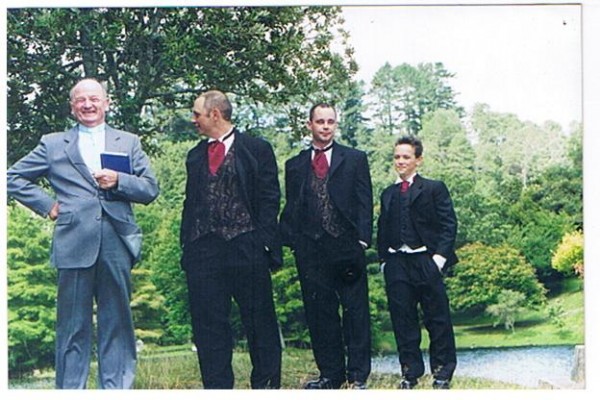
My Pakeha Grandfather John Steele Clark was an Anglican Minister and an Awsome Dude.
He married me to my wife Joy at Mclarens Falls Tauranga in 2002
You can read about him >>>Here<<<
**********************************
I am afraid that I am fast running out of time, and regret that there is so much more about these Issues I would love to discuss with you.
Hopefully I will be invited to talk to you again.
Yet I must quickly lay out a few final words.
The truth, and the moral High ground are on your side and they are very powerful Allies!
You are not racists, but are fighting a heavily entrenched and politically manufactured Racism.
I wish to give you my Maori Blessing upon your cause… It is Just. It is Honorable…. And it is urgent.
Not only to restore justice for Pakeha, and other Non-Maori Kiwis, but also for Maori themselves!
I sincerely believe this.
Equality, Freedom and justice are a boon for everyone.
They are the essentials for a Free and civil society.
I believe New Zealand desperately needs a written constitution which lays down the principles of Equality, Freedom, and Limited Government so as to protect the individual rights of everyone…. Irrespective of race… This is essential because it is in this way that we can assure Maori that they have nothing to fear from ending treaty separatism, and getting rid of the Racist electoral system.
They can know that their equal rights and liberties are protected from mobocratic rule just like every other minority, and under Freedom and equality, they may pursue their own happiness, and revel in their own culture to their hearts desire… as long as they are prepared to accept the flipside of the coin of Justice which has liberty stamped on one side, and personal responsibility stamped on the other.
And this alone is the way forward for Maori as individuals out of the social mire.
If Maori are to prosper they must forsake the delusion that they are victims of some Grand crime… and throw off that Racist chip which has been foisted upon their shoulders by the Machiavellian Political charlatans in their midst.
Maori need a new self image… not based upon Racial pride, but instead upon a self belief that they are Equals, and that they can, and ought to take care of themselves and prosper in Freedom.
Maori need to learn the Glory and Blessings of living in a nation which has One Law for All.
Thank you for listening.
Tim Wikiriwhi
